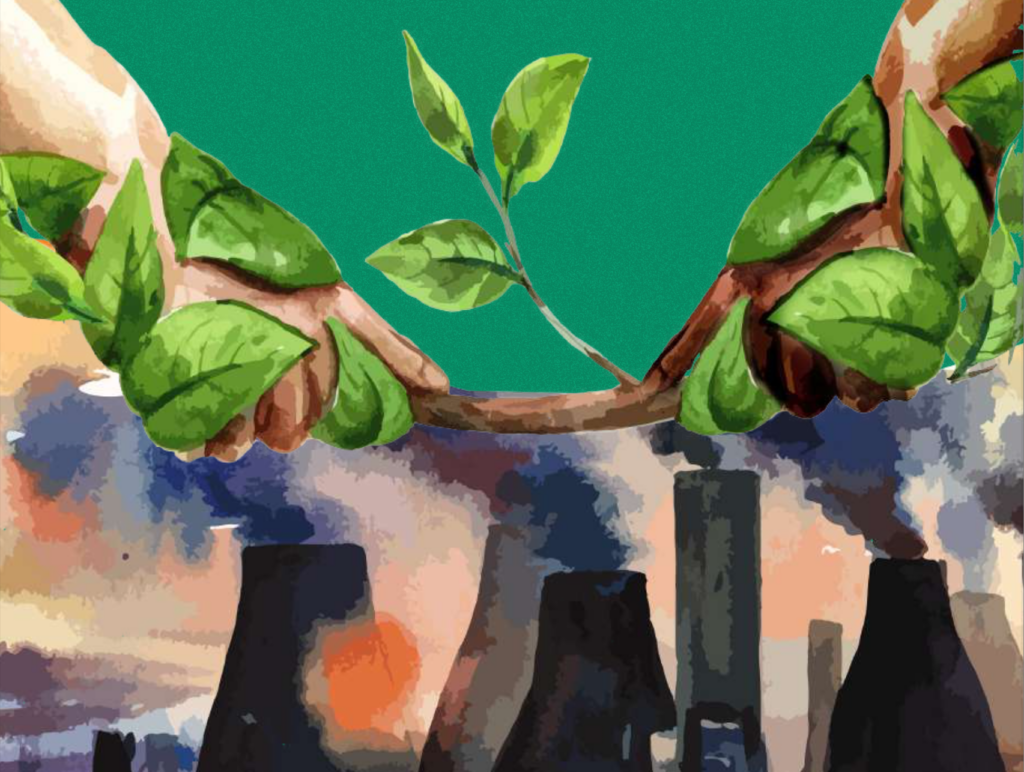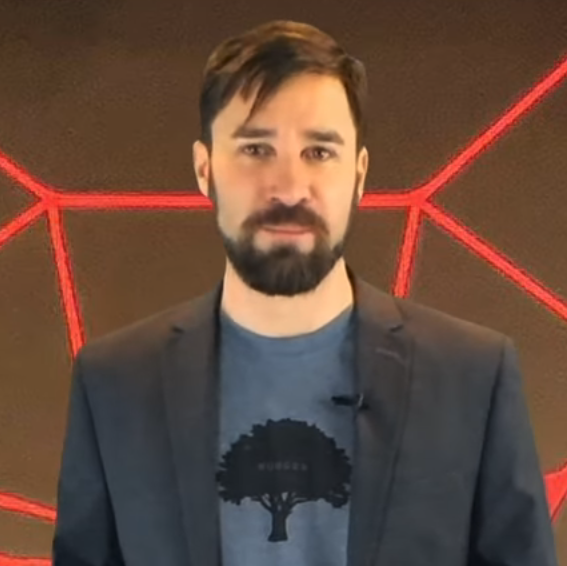This weekend marks the beginning of COP26. After being delayed for nearly a year because of COVID, diplomats, scientists, corporate lobbyists, NGOs, students, demonstrators, corporations, heads of state, and many, many other invited and uninvited guests are already making their way to Glasgow Scotland for what has been projected to be the most consequential U.N. climate change conference since the Paris Agreement was struck in 2015.
Earlier this week, the Arkbound Foundation published a new anthology, “Climate Adaptation: Accounts of Resilience, Self-Sufficiency and Systems Change.” The following is a (significantly reduced) transcript of a discussion I hosted with three of the co-authors, Morgan Phillips, Carol Manetta, and Ashish Kothari. You can listen to the entire conversation on The Response podcast.
- Morgan Phillips, UK co-director of the Glacier Trust, head of insight at Global Action Plan, and author of “Great Adaptations: In the Shadow of a Climate Crisis” (UK)
- Carol Manetta, Executive Director of Reap Goodness (USA)
- Ashish Kothari, Founding member of Kalpavriksh, co-coordinator of Vikalp Sangam and Global Tapestry of Alternatives, and a co-editor/author of several books including “Churning the Earth” and Pluriverse: A Post- Development Dictionary (India)
Tom Llewellyn: “Climate Adaptation” takes the perspective that socioeconomic collapse is probable. Rather than giving up hope, it seeks to outline ways people and communities can adapt to it. Morgan, can you talk about the challenges that are leading us towards socio-economic collapse and explain what adaptation is and what it currently looks like.
Morgan Phillips: That’s a big question. I’d start off by saying that socioeconomic collapse is obviously a possibility — unless dramatic action is taken. What’s quite certain is that things are going to change, and it’s really kind of up to us whether we change them or whether we’re changed by them.
My understanding of it is that we’re headed towards at least 2 degrees of warming within this century. We’ve got around 1.2 degrees of warming now, and it’s already not safe, it’s already causing desperate situations and deaths all around the world of human and non-human species. So we can’t downplay how bad climate change already has been and to think it’s going to go through that 2-degree threshold, continuing to have an impact over and over and over.
I think it’s safe to say that it’s not going to be great and it’s going to cause a lot of collapse events rather than one big collapse. There’s going to be lots and lots of collapse events happening, which have already started, and they’re going to gradually merge together to have that effect.
Right now in terms of what adaptation is and what climate adaptation is, there’s maybe three paradigms of it.
There’s climate adaptation, which is incremental change to the incremental change in temperature which is going on. So this is things like turning up the air conditioning a little bit more because the heat waves are a little bit stronger for a little bit longer. Or in ski resorts pumping out a little bit more fake snow from a snow machine each winter because the winters are a little bit milder. And those are kinds of adaptations that keep a sort of semblance of normality going in people’s lives.
Then we have this incremental within-system climate change adaptation. It’s not challenging the systemic causes of climate change. It’s just kind of letting the system roll on, letting it have its impacts and then adapting to the impacts that come down the track.
And then we’ve got kind of deeper, transformative adaptations where we’re looking at systems change as part of adaptation.
Tom Llewellyn: One of the things that we like to talk about on The Response is the ways that communities are able to respond to this larger climate of disasters that we’re finding ourselves in and taking action where they are. Carol, I’m wondering if you can jump in and talk a little bit about the work that you’ve been doing around the development of “trios of worker-owned cooperatives” and how they can support climate adaptation through Earth rejuvenation?
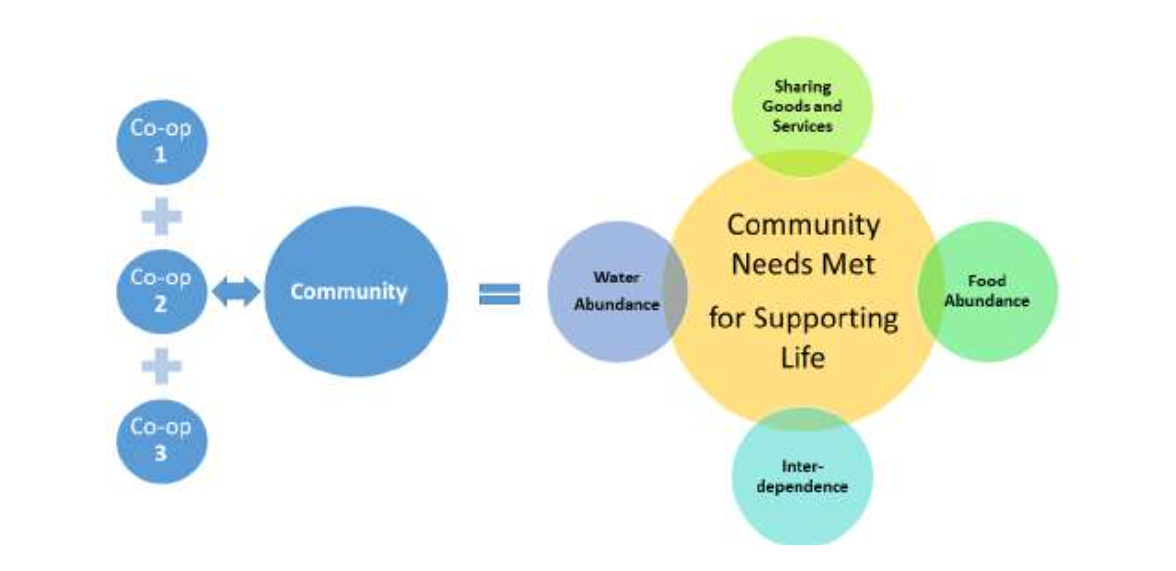
Carol Manetta: Yes, this is very exciting. The model that we have is unique in the world. So it’s an experiment. These trios of cooperatives would divide up the work of restoring the planet and managing water and holding it in the Earth and replenishing the water supply and off of roofs, of course, into tanks and developing food forests.
The second one would plan and plant food forests, which contain all foods that imitate old-growth forests and all the different levels that they have in trees and plants.
The third would be cleaning up all the polluted waters, starting with all the roadside ditches around the world, because that is the source of a great deal of pollution, including microplastics from the wearing off of tires.
The idea of having a trio of cooperatives working arm in arm is very much like the three musketeers, and being more effective with many hands making light work.
We have been given, for this purpose, some land in southern Arizona. It’s high desert, but it’s also been decimated by cattle, which is probably the leading cause of climate change.
The decision-making is what’s important from the people in the community, how it’s going to benefit them then how the community will benefit these trios of cooperatives by sharing what they have with them.
Tom Llewellyn: Thank you. Ashish, I want to pivot over to you and am wondering if you can talk a little bit about some adaptation measures that have been going on in India specifically as a result of the pandemic?
Ashish Kothari: I think there are two kinds of things and one of them is resistance. There was recently an article about how resistance in just 20 sites in the world against new fossil fuel extraction and so on is stopping possible emissions up to the level of something like 25% percent of the United States and Canada’s current levels of emissions. Now that’s a massive contribution to climate mitigation by Indigenous people and other local communities who are simply saying, No, we will not give our land for oil exploration and so on and so forth.
The second action that’s taking place across the world are where communities are either sustaining their traditional agroecological and forestry and coastal and fisheries practices, which have been sustainable for a long, long, long time, or are creating new such forms. I’ll just give you a quick example from central India of an Indigenous community where 90 villages have together reclaimed the collective rights over the forest resources that were taken away from them during colonial time by independent India’s government. They got it back. They now do such sustainable harvesting. They protect the forest, they enhance their own livelihoods, and they’ve created community funds out of that sustainable harvesting, which became very useful for workers, migrant workers who came back to the villages and didn’t have anything to fall back on. So it was community funds that actually helped to tide over the COVID pandemic and the economic lockdown.
Tom Llewellyn: Morgan, can you talk about transformative adaptation and how it differs from deep adaptation that people may have become more aware of recently and then talk about how it’s being applied in places like Nepal.
Morgan Phillips: Deep adaptation was originated from a paper by an academic called Jem Bendall who wrote a long article which set out the dangers of climate change and where we’re headed, and concluded that we’re headed for, I think he called it something like near-term and inevitable societal collapse due to climate change.
He talks about how we can psychologically and philosophically deal with that knowledge and actually come to terms with that and what we need to do. He has a four R’s framework, which are resilience, relinquishment, restoration, and reconciliation.
His definition of resilience is the most interesting one to look at. We talk about resilience a lot in sustainability as being able to cope and manage the situation. But he talks about it more in the sort of way that a psychologist would talk about it. So he talks about the way in which if we’ve suffered a profound loss in our lives, to be resilient is to be able to bounce back while recognizing that you’ll never bounce back to how things were before.
Transformative adaptation (TrAd) was posed originally by Professor Rupert Read from University of East Anglia, who was very prominent within Extinction Rebellion. He’s very sympathetic towards the deep adaptation movement, he’s just edited a book with Jem about it, which he’s wrote some interesting chapters in. But he doesn’t quite accept that we’re just going to lie down and take it. He still holds on to some belief that we can kind of transform society and come out the other side.
TrAd recognizes the massive need to mitigate and also recognizes that we have to create ways of organizing and living together that are going to be viable in the long term, considering that change is going to happen. So it’s going beyond to say, look, we’re going to lose some stuff and we need to transform the way our communities work, our societies work, our economies work and maybe shift away from economic growth models to more sort of wellbeing based economics.

Ashish Kothari: I think one of the things about transformations, both in mitigation and adaptation, and going into more systemic things, is to be able to challenge the fundamental structures that are created, the roots that are creating the problems in the first place. Because without that, what’s happening is that we’re being bombarded with all kinds of very superficial solutions like geoengineering and market fixes and carbon trading and things like that. And to some extent, I would even say net zero. What we need is to be able to challenge the structures, which means the structures of capitalism, of state domination, statism, patriarchy, racism and so on, because these are intimately underlying the maladies that we’re talking about.
Now what we see in a lot of the transformative alternatives that we’ve been looking at or being part of in the last few years, there’s changes taking place in five spheres, and I’ll go through this very quickly.
Firstly, political. Challenging the democracies about elections and party politics. Basically, a lot of self-determination movements around the world are saying no, democracy is about us taking power where we are. In central India there’s a village who says we elect the government in New Delhi, but in our village we are the government. All decisions will be taken by us. So that kind of radical democracy or self-determination is one.
Secondly, economic democracy, which is about producers, workers taking control over the means of production and not being in the hands of capitalists or the state. Collective rights to the Commons. The re-commoning of private property. Localization instead of economic globalization, self-reliance for basic needs, looking at indicators that are really, truly meaningful. Does everybody have clean drinking water? Do people have enough nutritious food? GDP as an indicator is absolute nonsense, so sort of throwing that out and bringing in much more qualitative, complex indicators of which are meaningful.
The third sphere of transformation is social justice. Whether we’re talking about gender equality or in the Indian context, doing away with casteism or other forms of inequality, we have ability, disability, LGBTQ. All those struggles.
Fourth, the struggles for decolonizing knowledge and culture. We have had 500 years of this. That’s enough. And basically, people are now asserting that our language, our cultural diversity, our foods, etc., our own identity, is as important as anybody else’s. So the diversity and the commons of knowledge and culture.
And finally, of course, reintegrating ourselves within nature because that’s the other thing that modern Westernization has done is it’s said that humans are separate from nature.
So I think these are the sorts of fundamental transformations people are trying to strive towards, and many of them are very small. Many are very large, such as the Kurdish women’s movement in Central Asia or the Zapatista in Mexico. But we really need to be able to nurture and learn from all of these if we want the kind of systemic transformations to avert, if not 2 degrees, whatever we’re targeting — in order to get there, I think we need these systemic transformations.
Tom Llewellyn: Morgan, I am really interested in some more examples of how this is happening on the ground right now. Can you talk about Nepal and its adaptation in rural areas?
Morgan Phillips: One of the things that Ashish mentioned was the devolution of power to more localized levels. And I think that’s one of the things which is gradually happening in Nepal. As far as I understand the politics of Nepal, it’s becoming more federalized.
What we’re working on in Solukhumbu, which is just south of Everest — if people know Nepal at all or Sagarmāthā which is what we should call it really — in those communities there, there’s an agroforestry revolution happening because those communities have for a long time been suffering from out-migration, which is caused by economic drivers and not just climate change, but climate change has been exacerbating those pressures and forcing more and more people to leave.
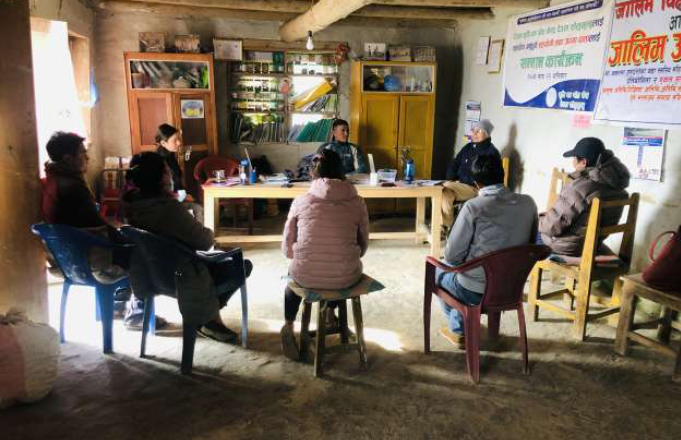
Through the agroforestry resource centers, which are community-led, farmers there are working together on ways to grow crops, which are, more resilient to the climate changes that happen — more resilient to insect pests, infestations, and lower amounts of rain or erratic monsoon seasons so that developing these new ways of doing agriculture or introducing new ways of agriculture to that area, which are more resilient.
But also it’s part of that process of developing that area economically because whilst overall economic growth can’t continue, it does need to happen in pockets of the world where there’s been very little of it and people are very poor. We still need that economic growth there. And so in these mountain communities, that economic growth is needed, it’s what keeps people there.
One of the things we’re trying to do, which I think talks to the second point that Ashish made around the systemic structures and the way the economies are organized, is helping farmers to grow coffee — and not just because it’s a crop that can survive at those high altitudes now, but also because it’s a high-value crop, which can bring an income.
What we’re trying to do, which is the biggest innovation and the biggest challenge to the kind of system at a global level, is that we’re trying to ensure that that coffee isn’t just grown there and then sent off to the western world to be processed and roasted and have all the value-added to it in another country where basically all the profit is made through the roasting. Our dream is to have a roaster on the farms themselves. And so the farmers are going right from growing it from seed to the plant to picking it, to processing it, to roasting it themselves, and then selling it as a roasted bean because that’s where they can make the money.
Tom Llewellyn: Carol, you might want to jump in here — the ways that you are looking at the supply chain I think are similar to what you were talking about earlier around the triad of worker co-ops and how different sectors can be working in concert with each other.
Carol Manetta: We envision shortening of supply chains by having what people need on a basic level, right where they’re at in the local communities to the extent possible. And then exchanging with nearby communities. It’s really what the Indigenous people did, at least here in North America, as far as I understand it, in the tribal areas. They always did this internally and then with their adjoining regions.
So as we have the shortened supply chains, we will definitely be helping to mitigate climate disasters by removing roads — we don’t have to have as many roads. The roads replace much more of the Earth than anything else. So as we remove the idea of trucks, we can reuse the materials from these trucks, the truckers then can have new occupations locally to help their own communities instead of being away from their families, which is disastrous for family health.
Tom Llewellyn: So this book “Climate Adaptation” came out, and part of the idea was wanting to paint a picture of what beneficial adaptation can look like for communities around the world. And one of the reasons why it’s coming out now is because of COP26, which is going to be the big climate talks that are supposed to be happening next week in Glasgow. What is the story around adaptation that you would like to be present in conversations that are happening in places like COP? And also are there other places where this conversation should be taking place?
Morgan Phillips: I think adaptation is creeping up the agenda slowly. But we really have to be vigilant about what they mean by adaptation and really scrutinize the adaptations that are being put forward because there’s a big danger as the reassuring story that climate change is under control falls apart, another reassuring story will start, which will be, don’t worry, all the big businesses and big governments are going to look after you and keep you safe.
And that will mean that adaptations are done to people and sort of for people rather than with them and by them. Which is the community-led, socially just form of adaptation that we want to see. So it’s great that adaptation is getting on the agenda, and it’s been a battle to try and get it on the agenda, but now that it’s on the agenda, we have to really talk about the different forms of adaptation, talk about things like transformative adaptation and what that means. Make sure that climate change isn’t siloed off as one issue and actually make sure that it’s understood as a symptom of greater systemic faults which need to be addressed.
And I think in a very short term, in a very practical hard politics sense of it, we need the hundred billion dollars promised to be honored, and actually, we need it to go up — a hundred billion is nowhere near enough.
And so it’s not good enough that that hundred billion ends up just getting spent on big green tech projects, which turn green tech entrepreneurs into millionaires. We need to actually make sure that hundred billion is going to the people who need it the most.
Carol Manetta: I would like to give this message to those people who are the quiet trillionaires and the multibillionaires, and that is that the money needs to go to not just the big greens, the few organizations that have been around for a long time and are already funded by others. But to get those into the hands of those organizations that are doing work on the ground level and really echoing what Morgan has just talked about.
Ashish Kothari: Obviously, there’s lots of civil society presence that’s going to be there at COP26 before and during it, which is going to continue to try and put pressure on governments to act, not just promise, but also act and to actually up their ambitions. But at the same time, I think we shouldn’t be putting too much hope in the intergovernmental processes. They have failed — this is the 26th COP. That itself should be a sign of something, and yet no signs of any significant reduction in the rates in which temperatures are rising.
I think what we also need is significantly more civil society action on multiple fronts on climate and biodiversity and so on. But also pressure on local governments, on municipalities, on states, on provinces. So that one doesn’t focus only on nation-states. National governments, which, because of all the intense hostility and competition, often even find it difficult to do something even if they want to. But provinces, states, local administrations, municipalities could be much more amenable to the kinds of actions that we’re talking about, and they have a lot of stuff in their hands, in their control. A lot more attention needs to be focused on that level of governance also apart from the communities doing whatever they can on the ground.
Tom Llewellyn: Ashish, I really appreciated the title of the chapter you wrote for this book: “Visioning the Future as an Act of Subversive Democracy.” As we wrap up, I want you to talk about these alternative visions that can be a part of adaptation, because we’re constantly being bombarded with this either doom and gloom, that it’s already too late. And so we might as well just go down with the ship. Or it’s the putting the head in the sand, we’re just going to increase the amount of artificial snow that we’re sending out. But there really is that alternative future — those alternative opportunities, and that’s where the transformative adaptation comes in. I’m wondering if you can start there, Ashish?
Ashish Kothari: Utopias or utopian visions have always had a very important place in human society, whether we think of constitutions of nation-states, all of them or virtually all of them have utopian visions. And what I think is very important about these is that it, first of all, provides different narratives to the dominant narrative, which we otherwise all accept as being the only one. And it actually stimulates us to go beyond what we think is practical and realistic right now, because if we stick to the practical and the realistic, we’re never going to make these transformations possible.
Just to give a very simple example of that. I think when Britain was ruling half the world and it was said that the British Sun is never going to set, if we’d had this conversation and people would have said, Oh, we’re going to be able to throw out Great Britain from most of the world within the next 20 years, we would have laughed and said, Oh, come on, that’s not possible. But it was. Anti-colonial movements got stronger and stronger, and at least that form of colonization has been defeated.
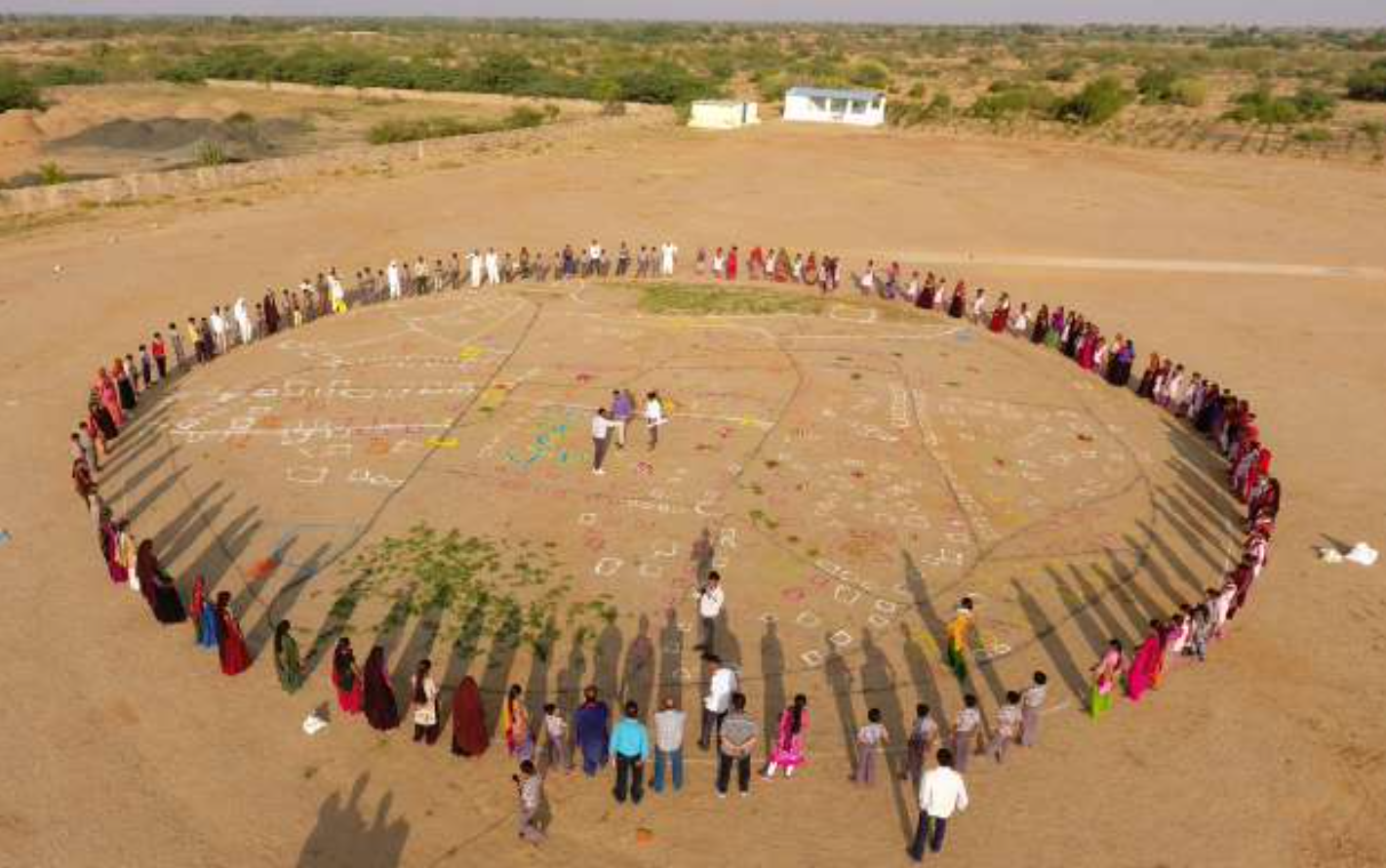
So I think it’s very important to be able to dream, to visualize, to vision. And that becomes, in fact, a very crucial part of subverting the current dominant system. Because if they make us lose our dreams, if they make us lose our visions and our hopes, then, of course, they’ve already won by default. So that’s why I think it’s really important, but also to emphasize that this is about dreaming pluriversal worlds. It’s not just one vision of society that we want to move towards, but multiple visions. Maybe there are some common threads, threads of ethics, and values like solidarity, like diversity, like love, like self-determination, autonomy, freedom. These are sort of fundamental values that probably everybody in these alternative visions would adhere to or want to adhere to, but otherwise, they’re extremely diverse in differences.
Morgan Phillips: I think what Ashish was saying about the multiple visions that are needed and there will be multiple different futures that we’re heading towards — I think that’s a really key point to me.
I don’t think post-collapse or post-the careful dismantling of Western civilization, we’re not going to get one successful civilization. We’re going to get multiple successive civilizations and they’re going to feel different and look different in different places.https://sanfrancisco.cbslocal.com/tag/cool-city-challenge/
The world is going to become more diverse and interesting as a result of it. And I think we’re seeing these different successive civilizations starting to to pop up, and it’s exciting that they’re coming because we very much need those visions because that’s what will drive a lot of people, especially in the West, where we have our creativity drummed out of us through our education systems, to actually start to imagine what’s different in the world and what could be different.
I think the flowering of that is where I find hope.
Tom Llewellyn: Thank you, Morgan. Carol, do you have any final thoughts you’d like to share?
Carol Manetta: I would like to congratulate you on having not only these podcasts, but doing the work with Shareable. It’s a word that all of us need to hear — “shareable,” and to understand how it’s going to transform our world to go back to the idea of sharing rather than competing. And I appreciate the different organizations that you are bringing in to talk about this and to encourage you to do a lot more of that, please.
Listen and subscribe to The Response with the app of your choice, including:
The Response from Shareable.net, is an award-winning documentary and podcast series hosted by Tom Llewellyn exploring how communities are building collective resilience in the wake of disasters.
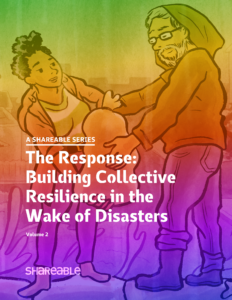 |
Download our free ebook- The Response: Building Collective Resilience in the Wake of Disasters (2019) |

